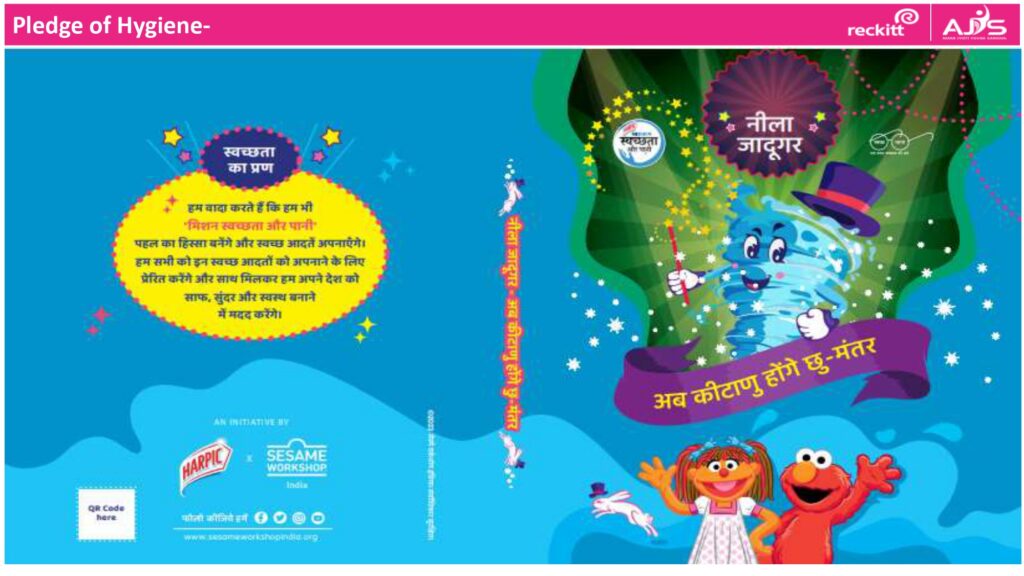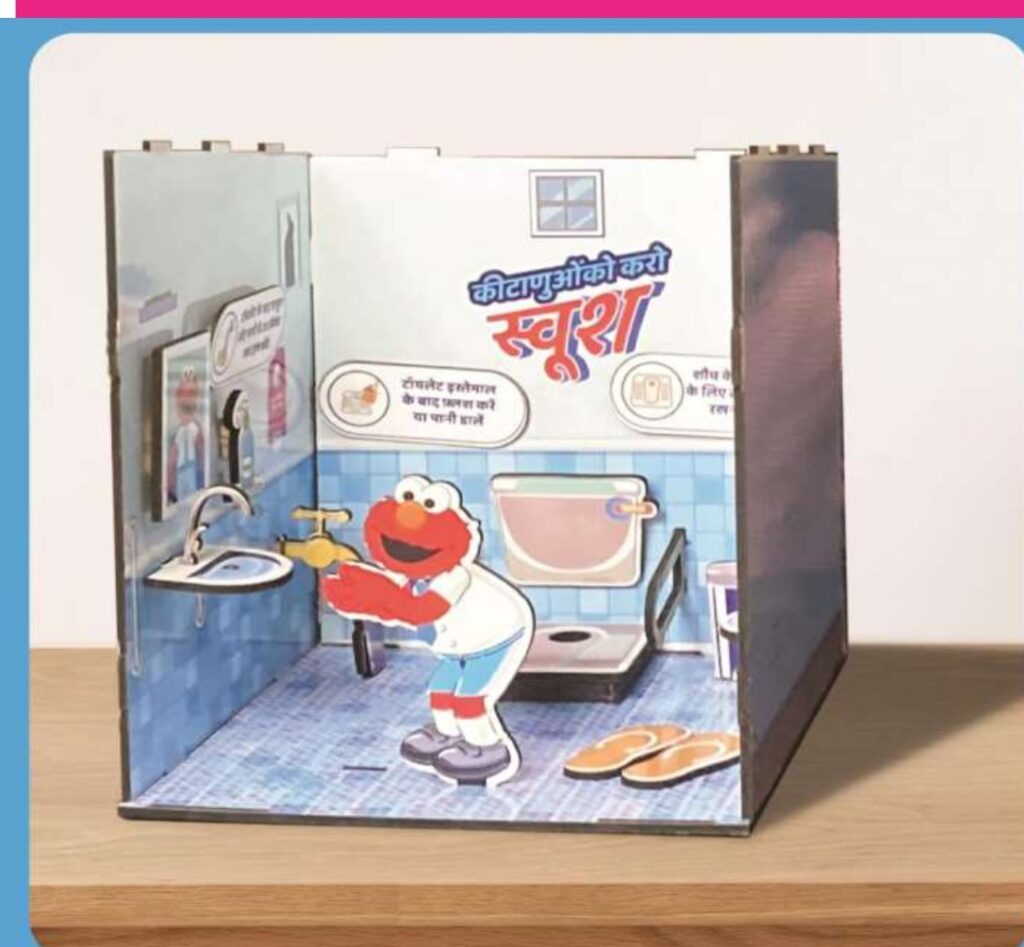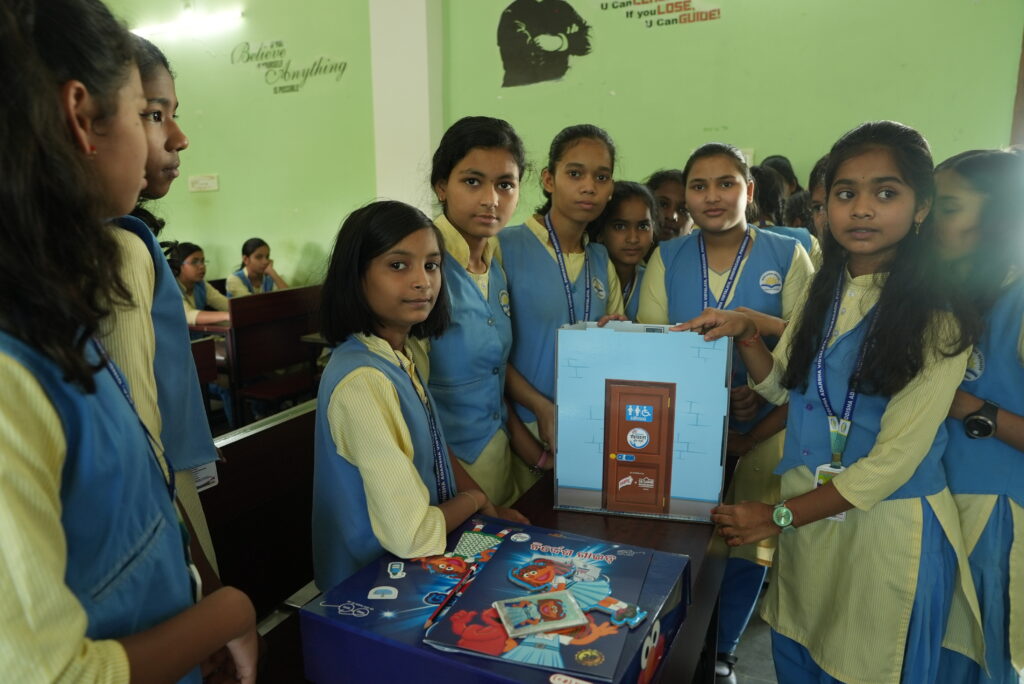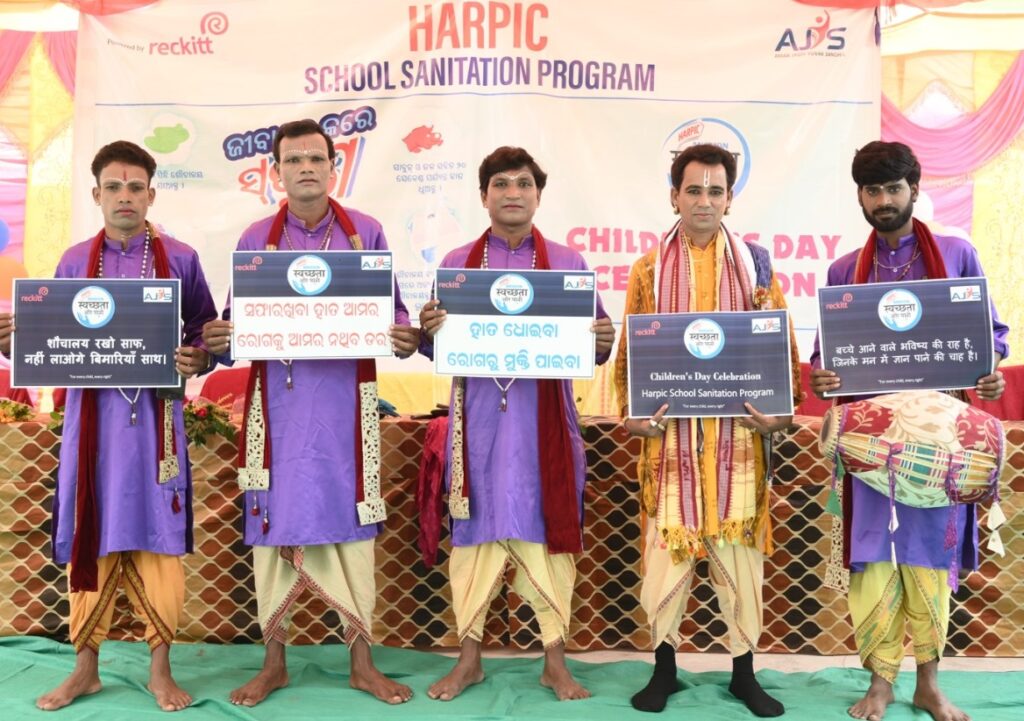The IEC materials and tools used in the Harpic School Sanitation Program are diverse and designed to appeal to school children, making the learning process engaging and effective. Here’s a brief note on their relevance and the messages they provide to appeal sanitation behavior change among school children:
Neela Jadugar Pop-Up Story Book:
- Relevance: Utilizes storytelling to convey sanitation messages.
- Message: Teaches children about the importance of sanitation through characters and narrative, making the information relatable and memorable.

K.K Kitanur Pop-Up Story Book:
- Relevance: Another storytelling method to convey healthy toilet behaviors.
- Message: Educates children on proper toilet usage and hygiene practices, emphasizing the significance of maintaining clean and healthy toilets.

3D Puzzle Kit:
- Relevance: Hands-on activity to engage children in understanding toilet infrastructure.
- Message: Encourages children to actively participate in creating model toilets, fostering a deeper understanding of sanitation facilities and their importance.

Video on 3D Puzzle Kit:
- Relevance: Visual aid to demonstrate the assembly of the puzzle kit.
- Message: Provides step-by-step guidance on assembling the 3D puzzle kit, enhancing children’s comprehension of toilet construction and functionality.
Videos on Pop-Up Story Books:
- Relevance: Visual storytelling to reinforce sanitation messages.
- Message: Offers additional engagement through animated versions of the storybooks, reinforcing key sanitation concepts in an entertaining format.
Wall Painting and IEC Sabus Poster:
- Relevance: Utilizes visual cues to reinforce sanitation messages in school environments.
- Message: Presents key sanitation messages in a visually appealing and prominent manner, serving as constant reminders for students and staff.
Group Activity on School Toilet:
- Relevance: Encourages active participation and discussion among teachers.
- Message: Engages teachers in discussions about school toilets, gathering insights and perspectives to improve sanitation facilities and practices.

Tribal Language Song and Local Folk Pala Song:
- Relevance: Cultural adaptation to resonate with specific communities.
- Message: Delivers sanitation messages through familiar cultural mediums, making the information more accessible and relevant to local audiences.

Promotes School Sanitation Song in Sambalpuri Language:
- Relevance: Utilizes regional language to connect with the target audience.
- Message: Communicates sanitation awareness in a language familiar to the community, increasing comprehension and resonance of the message.
These IEC materials and tools used in the Harpic School Sanitation Program employ diverse mediums and approaches to effectively communicate sanitation messages, aiming to instill behavior change among school children regarding the access, usage, and maintenance of sanitation facilities in schools.
The Impacts:
The impact of these IEC materials and tools in the Harpic School Sanitation Program is significant in several ways:
Increased Awareness: Through storytelling, videos, songs, and visual aids, children gain a better understanding of the importance of sanitation practices, leading to increased awareness about hygiene and its impact on health.
Behavior Change: The engaging and interactive nature of these materials encourages children to adopt and practice proper sanitation behaviors. They learn not only the importance of using toilets but also how to maintain cleanliness and hygiene in sanitation facilities.
Community Engagement: By involving teachers and utilizing local languages and folk art, the program fosters community engagement and ownership of sanitation initiatives. This promotes sustainable behavior change as it aligns with local cultural norms and practices.
Improved Infrastructure Utilization: The use of the 3D puzzle kit and wall paintings helps children understand the design and functionality of sanitation facilities. This knowledge empowers them to utilize these facilities effectively and responsibly.
Cultural Sensitivity: By incorporating tribal languages and local folk art, the program respects and acknowledges the cultural diversity of the community. This approach enhances the relevance and acceptance of sanitation messages, leading to a more significant impact on behavior change.
Long-Term Health Benefits: By instilling proper sanitation behaviors at a young age, the program contributes to the overall health and well-being of children and the community. Reduced incidence of waterborne diseases and improved hygiene practices lead to better health outcomes in the long run.
Capacity Building: Through group activities and engagement with teachers, the program builds the capacity of the school community to take ownership of sanitation initiatives. Teachers become advocates for sanitation and play a crucial role in sustaining behavior change among students.
The IEC materials and tools used by AJYS in the Harpic School Sanitation Program not only convey important sanitation messages but also drive significant impact by fostering behavior change, community engagement, and long-term health benefits.


